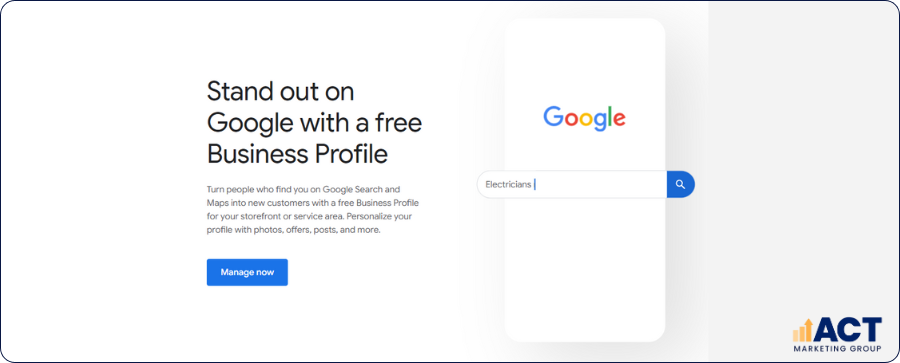Many small businesses in Australia find it tough to reach more customers online, even when their products and services are in demand. One of the biggest reasons is that their websites aren’t set up for mobile devices, which means they’re missing out on valuable opportunities in Google search and local SEO.
In this article, we’ll explain why mobile optimisation is important for SEO, how it impacts your search results and local rankings, and what steps you can take to make your website easy to use on any mobile device. You’ll discover how a mobile-optimised site can help you attract more customers, improve your business profile, and give your business a stronger presence in local search results.
Get a Customized Marketing Strategy for Your Business
Schedule a free consultation to discuss how our digital marketing solutions can help you reach more customers.
How Mobile Devices Changed the Way Customers Find Your Business
The way Australians use the internet has changed dramatically in recent years. Most internet users now rely on their mobile phones for everything from browsing to shopping and finding local businesses. If your website isn’t mobile optimised, you risk losing potential customers who expect fast, easy access to your business information—like your business name, opening hours, and contact details—directly from their mobile device.
Why Mobile Usage Matters for Search Results
Mobile usage now drives most search queries in Australia. When people search for services, products, or local businesses, they’re likely doing it from a mobile phone. Google’s search results give preference to mobile-optimised sites, meaning if your site isn’t mobile friendly, you could be missing out on organic search results and falling behind other sites that offer a better mobile experience.
The Impact on Local SEO and Local Rankings
Local SEO is all about helping your business show up when people search for services in specific locations. Most local search queries now come from mobile devices. Google’s local pack, which highlights top businesses in an area, favours mobile-optimised sites with accurate business profiles and positive reviews. If your website loads quickly and is easy to use, you’re more likely to rank higher in local search results and attract more customers.
To learn how internal links can strengthen your site and improve rankings, see our Internal Linking Guide for Better SEO Rankings.
Practical Solutions to Improve Your Mobile Presence
Making your website mobile optimised isn’t just about ticking a box for search engines—it’s about making it easier for your customers to find, use, and trust your business. Here’s how you can get started.
Use Responsive Design for All Screen Sizes
Responsive web design ensures your website content looks great and is easy to use on any device, from mobile phones to tablets. This approach means users get the same content and experience optimised for their device, whether they’re browsing from home or on the go. Responsive design is a key element for mobile optimisation and is favoured by search engines like Google.
Speed Up Your Mobile Site
Mobile users expect sites to load quickly. Slow load times can push customers away and hurt your rankings in Google’s search results. To keep visitors on your site, make sure your pages load quickly by optimising images, reducing unnecessary code, and using tools like Accelerated Mobile Pages (AMP). A fast, mobile-optimised site keeps users engaged and increases your chances of turning visitors into satisfied customers.
Make Business Information Easy to Find
Your business name, opening hours, and contact details should be clear and easy to access on your mobile site. This helps your Google Business Profile stand out and makes it simple for customers to get in touch. Accurate business information also helps you appear in local search results and the local pack, giving you more visibility in your community.
Keep Navigation Simple and User-Friendly
A clear site structure helps both users and search engines find your most important pages. Use short paragraphs, clear headings, and concise meta descriptions to make your website content easy to scan. Avoid broken links and intrusive pop ups, which can frustrate users and lower your rankings. Make sure your navigation is simple, and that users can access key business information—like your business name, opening hours, and contact details—without having to zoom or scroll excessively.
How Mobile Optimisation Boosts Local SEO
Mobile optimisation is especially important for local SEO. When people search for services or products in their area, they’re often ready to make a decision quickly. A mobile-optimised site helps you appear in local search results, attract more customers, and stand out from other sites.
Connect Your Google Business Profile for Local Visibility
Your Google Business Profile is a crucial digital asset for local SEO. Keeping your business information up to date—such as your address, phone number, and opening hours—helps your site appear in local search results and the local pack. A mobile-optimised site links seamlessly with your Google Business Profile, making it easier for mobile users to find and contact you.
Use Local Keywords and Relevant Content
Incorporate local keywords naturally into your website content, title tags, and meta descriptions. For example, use phrases like “Canberra electrician” or “best hairdresser in ACT” to target search queries specific to your area. This approach helps your site appear in local search results and attracts more customers from specific locations.
Encourage More Reviews from Satisfied Customers
Encourage satisfied customers to leave reviews on your Google Business Profile. Positive feedback not only builds trust but also improves your local rankings. Responding to reviews—both positive and negative—shows you value your customers and can help you attract more reviews over time.
Key Elements of a Mobile-Optimised Site
A mobile-optimised site isn’t just about looking good on a small screen. It’s about creating a user experience that’s fast, easy, and enjoyable for everyone who visits your site on a mobile device.
Make Sure Your Site Works on All Devices
Test your site on multiple platforms and screen sizes to ensure it works smoothly everywhere. Use responsive design so your site automatically adjusts to fit any device, and check that all links, buttons, and forms are easy to use on a mobile phone.
Keep Content Clear and Concise
Mobile users are often in a hurry and have limited screen space. Use short paragraphs, bullet points, and clear headings to make your content easy to read. Avoid large blocks of text and focus on the information your users need most.
Optimise for Voice Search and Local Results
Many mobile users now use voice assistants to search for businesses and services. Optimise your website content for conversational phrases and question-based keywords, like “Where can I find a plumber near me?” This strategy can help you capture more voice search traffic and appear in featured snippets or local results.
For strategies to make your content more visible in Google’s search results, read our article on How to Get Your Content Shown in Google's Special Boxes.
Use Structured Data for Better Search Visibility
Structured data helps search engines understand your business information and display it accurately in search results. Add schema markup to your site to highlight your business name, address, phone number, opening hours, and more. This makes your site stand out in Google’s search results and can improve your local visibility.
Avoid These Common Mobile Optimisation Mistakes
Even small mistakes can have a big impact on your mobile presence and search rankings. Here are some pitfalls to watch out for:
Ignoring Responsive Design: Not using a responsive layout can make your site difficult to use on mobile phones, leading to higher bounce rates and lower rankings.
Slow Load Times: Large images, unnecessary scripts, and unoptimised code can slow down your mobile site, frustrating users and hurting your search rankings.
Intrusive Pop Ups: Pop ups that cover most of the screen or are hard to close can drive users away and may be penalised by Google.
Missing Business Information: If your business name, contact details, or opening hours are hard to find on mobile, you risk losing potential customers.
Not Using Local Keywords: Failing to target relevant keywords and specific locations means missing out on valuable local search traffic.
Inconsistent Content: Offering less content on your mobile site than your desktop version can lead to lower rankings under mobile-first indexing.
Measuring Success: How to Track Your Mobile Optimisation Efforts
It’s important to know if your mobile optimisation efforts are working. Here’s how you can measure success:
Check Your Rankings in Google Search
Keep an eye on where your site appears in Google’s search results, especially for local keywords and search queries related to your business. Use tools like Google Search Console to track your performance and identify areas for improvement.

Monitor Mobile Site Performance
Use Google’s Mobile-Friendly Test and PageSpeed Insights to check how your site performs on mobile devices. Look for issues like slow load times, broken links, or unreadable text, and fix them promptly to keep your site running smoothly.

Track Customer Engagement and Reviews
Pay attention to how many customers are finding your business through mobile search, leaving reviews, or contacting you via your website. More reviews and higher engagement are good signs that your mobile optimisation is paying off.
Conclusion: Take Action to Strengthen Your Mobile Presence
Mobile optimisation is important for SEO because it directly affects your site’s presence in Google’s search results, especially for local searches. By focusing on responsive design, fast load times, clear site structure, and up-to-date business information, you can improve your local rankings and attract more customers through mobile devices.
We help small businesses in the ACT create mobile-optimised sites that load quickly, look great on all screen sizes, and provide an experience optimised for today’s mobile users. If you want to reach more customers, rank higher in local search results, and ensure your digital assets work for you on multiple platforms, get in touch with us today. Let’s make your business easy to find and a pleasure to use—no matter how your customers search.

